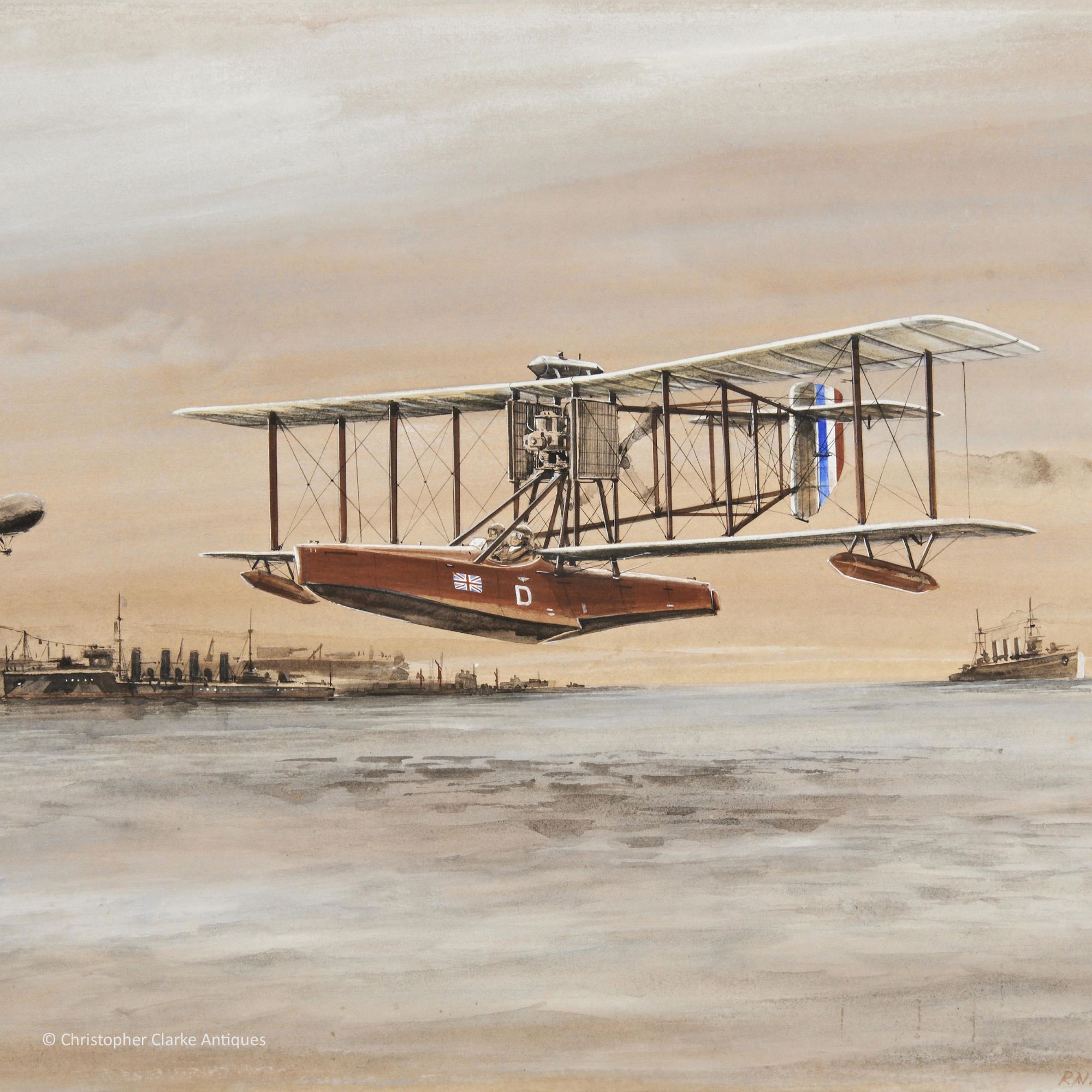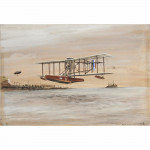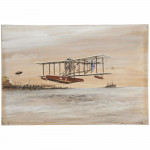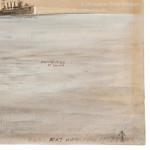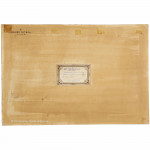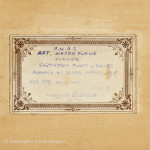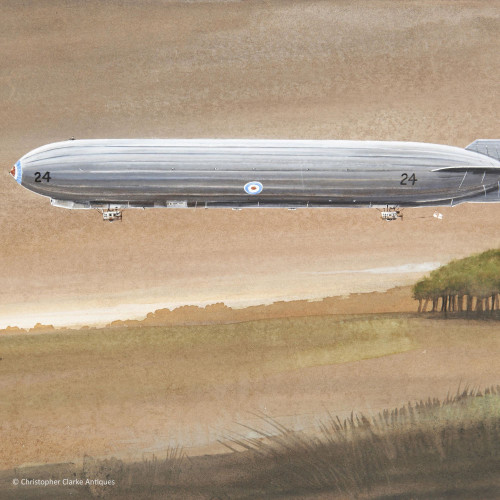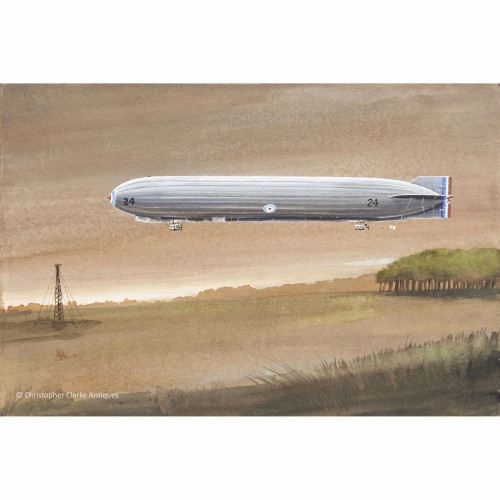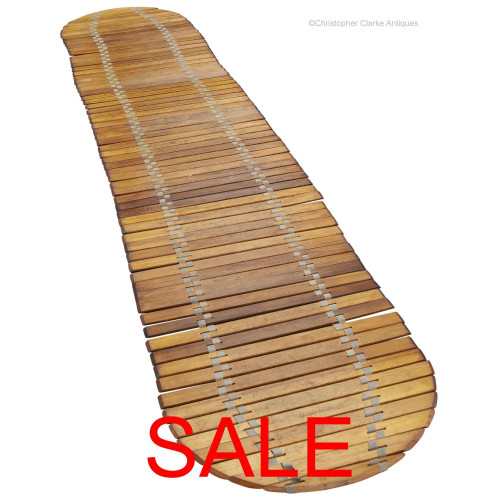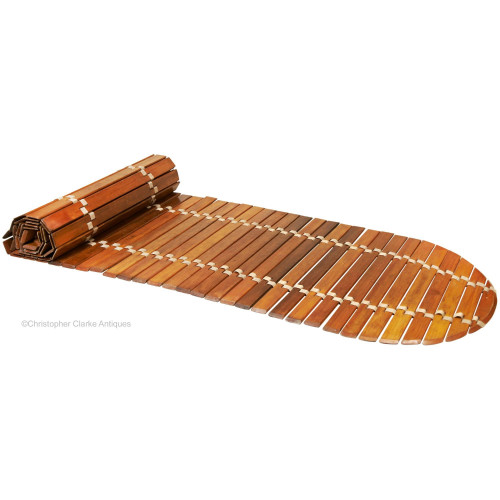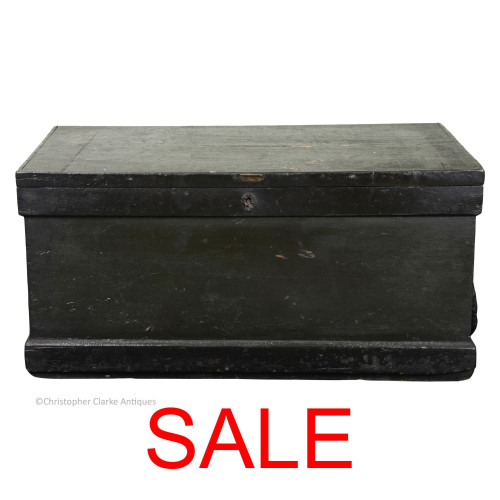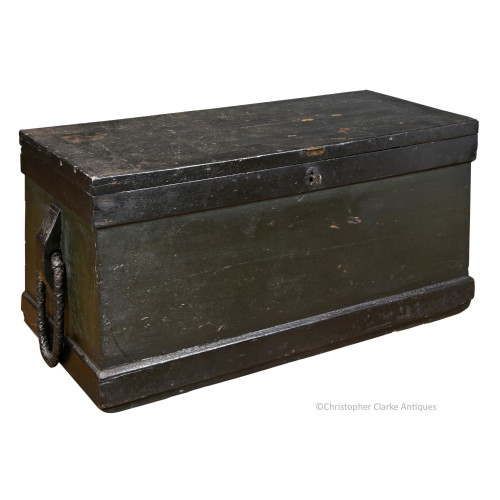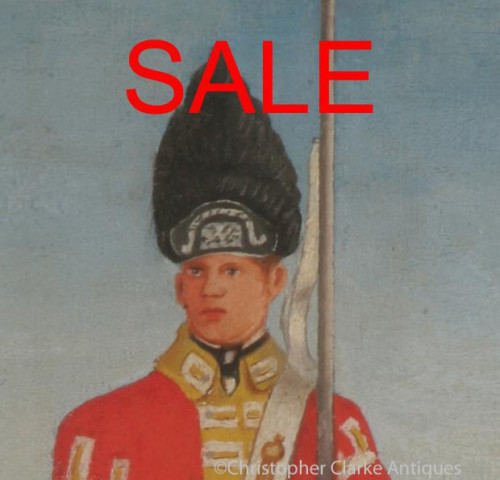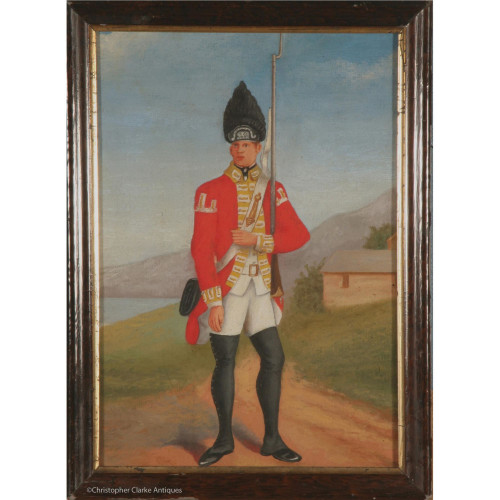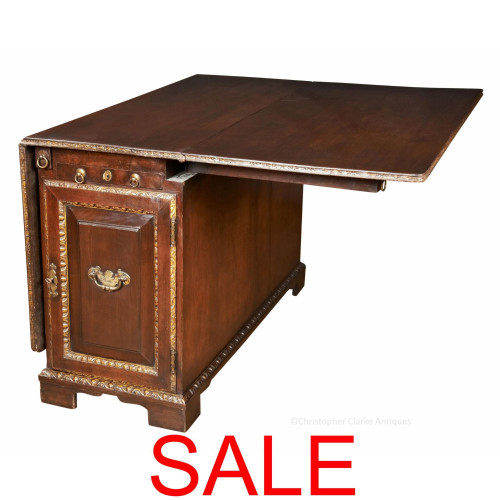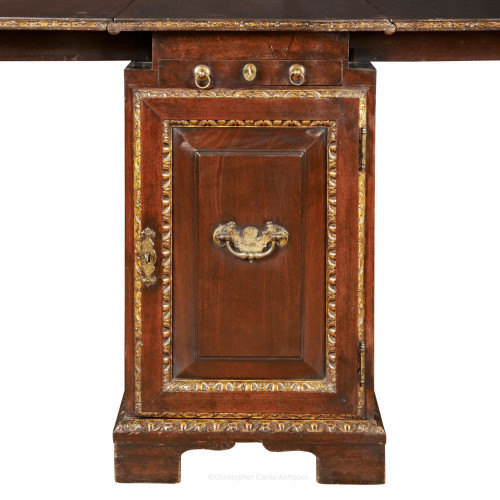SOLD Sopwith BAT Biplane by Norman Wilkinson
SOLD Sopwith BAT Biplane by Norman Wilkinson
A watercolour and gouache on board of a Royal Navy Air Service BAT Water Plane.
SOLD
The Flying Boat is shown fairly low to the water with Dover's Admiralty Pier with a warship at anchor in the background along with the white cliffs and an Airship. Another warship at sea is also shown to the background. The painting is signed 'Norman Wilkinson 17 Dover' and to the bottom right edge is also written 'RNAS. B.A.T Waterplane 1917 Dover'. Pencil up arrows for sizing are also marked to the bottom corners.
A handwritten label to the back notes 'R.N.A.S BAT. Water Plane, Trainer, Eastchurch Flight - Dover, Forming Of Dover Patrol 1917, ADM. Pier Base West, Card. 3. Norman Wilkinson 1917'. To the top left corner of the back, written directly to the board is '3 Dover Patrol R.N.A.S.' Written in pencil to the bottom left corner is 'R.N.A.S Nr 3. Dover' with possible sizing marks.
The Dover Patrol was made up of a wide range of ships, boats and aircraft from cruisers to submarines and motor launches and from seaplanes to airships. It was important to both the country's defence and offence in the Great War. BATs were first purchased by the Admiralty in 1913 and were mainly used for recognisance. The label to the back of this illustration suggests that the subject was a trainer plane. This would tie in with its end of production in 1915 as aircraft engineering quickly developed in the period.
The BAT Flying Boat was made by the Sopwith Aviation Company, working with the Cowes company of S.E. Saunders. Saunders had invented Consuta, a watertight construction of thin mahogany planks alternately layered with calico and all sewn together with copper wire, to make the hull. The open cockpit hull seated two side by side. Tom Sopwith won a number of prizes across various sports, including flying, and his aviation company followed suit. This included the BAT winning the Mortimer Singer £ 500 prize for the first successful British amphibious aircraft in 1913.
Wilkinson has effortlessly painted his subject showing lots of detail with the minimum of brush strokes. A second, very similar painting but with a tug boat to the background and smaller in size is also known by Wilkinson. It is possible that the two paintings were intended as options for either a book or cigarette card illustration. Dated 1917.
Dimensions:
1917
Watercolour & Gouache on Board
England
Norman Wilkinson 17 Dover
Seaplane Illustration
Unframed. Some uneven edges and shadow marks suggesting it's previously been framed.
RELATED ITEMS

